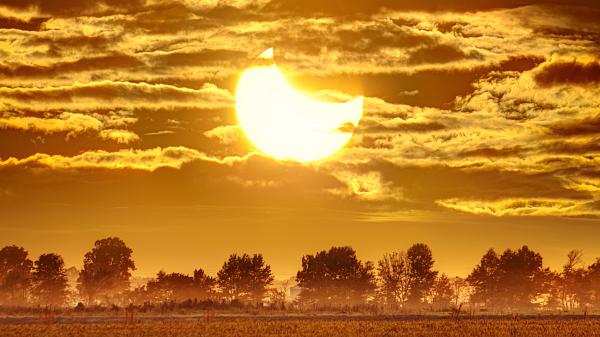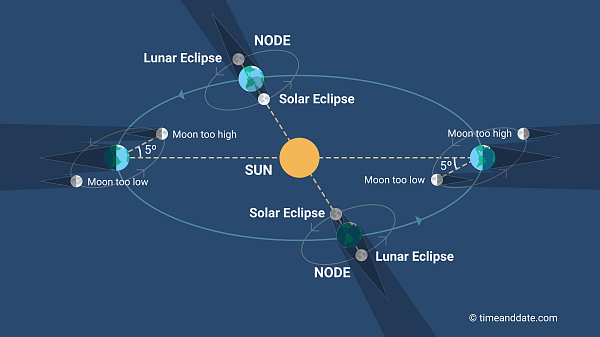What Is a Partial Solar Eclipse?
Partial solar eclipses happen when the Moon comes between the Sun and Earth, but the Moon only partially covers the Sun's disk.

Next Partial Solar Eclipse: Sun, Sep 21, 2025 … See animation

A partial solar eclipse in Arkansas in 2014.
©iStockphoto.com/clintspencer

During a partial solar eclipse, the Moon, the Sun and Earth don't align in a perfectly straight line, and the Moon casts only the outer part of its shadow, the penumbra, on Earth. From our perspective, this looks like the Moon has taken a bite out of the Sun.
Sometimes, the Moon covers only a tiny part of the Sun's disk. Other times a partial eclipse looks almost like a total eclipse. The size of the eclipsed area is referred to as eclipse magnitude.
Total or Partial?
Solar eclipses occur 2—5 times a year and they are usually named for their darkest, or maximum, point. Both total and annular solar eclipses are seen as partial eclipses from the areas on Earth that are outside the Moon's inner shadows, the umbra or antumbra, but inside the penumbra (outer shadow).
Which cities get the most eclipses?
What is a hybrid solar eclipse?


Lunar nodes are the locations where the Moon crosses the Earth's orbital plane.
Only at New Moon
Solar eclipses can only happen at New Moon because the Moon passes between the Sun and Earth during that Moon phase.
However, not every New Moon results in a solar eclipse. This is because the plane of the Moon's orbital path around our planet is inclined at an angle of approximately 5° to Earth's orbital plane around the Sun, the ecliptic. The points where the 2 orbital planes meet are called lunar nodes. Solar eclipses occur only when a New Moon takes place near a lunar node.
3 Phases
There are 3 distinct stages of a partial solar eclipse:
- Partial solar eclipse begins: The Moon starts moving over the Sun's disk.
- Maximum eclipse: The eclipse reaches its maximum magnitude. The Moon now covers more of the Sun's disk than at any other moment during the eclipse.
- Partial solar eclipse ends: The Moon stops covering the Sun.
More Common Near the Poles
About 35% of all solar eclipses are partial solar eclipses, meaning that they occur more often than total or annular solar eclipses. The larger size of the Moon's penumbra compared to its umbra, the shadow's dark center producing total solar eclipses, also means that more places on Earth get to experience a partial solar eclipse.
During a partial solar eclipse, the Moon's umbra or antumbra, the shadow's center portion, is cast into space just above the polar regions, missing Earth by a narrow margin. This means that partial solar eclipses, while potentially being visible at all latitudes, usually center around a place close to one of the poles.
When is the next eclipse in your city?
Protect Your Eyes!
Never look directly at the Sun, eclipsed or otherwise, without any protective eyewear. The Sun’s UV radiation can burn the retinas in your eyes leading to permanent damage or even blindness.
The best way to safely watch a total solar eclipse is to wear protective eclipse glasses or to project an image of the eclipsed Sun using a pinhole projector.




